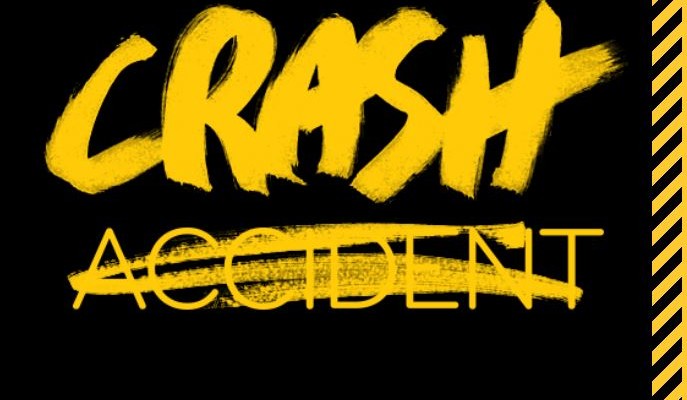
IIHS Updates List Of Safest Used Cars For Teens
October 9, 2015
The Insurance Institute for Highway Safety (IIHS) has updated their list of the safest used cars for teens and, with manufacturers creating more and more safer vehicles, the list is 50 percent larger than last year’s list.
The IIHS found last year that teens were more likely to drive cars that were smaller, older, and less safe than vehicles driven by their parent’s generation. To guide parents and teens toward safer vehicles, the IIHS published their first list of safest used cars for teens last year.
The criteria for choosing the safest used cars hasn’t changed. Those criteria are:
- Stay away from high horsepower vehicles. Teens don’t need to be tempted to test the limits.
- Larger, heavier vehicles offer more protection in a crash. Small, light vehicles such as smart cars and mini-coopers weren’t considered for the list.
- Electronic Stability Control (ESC) is required. ESC prevents over-correction and helps keep the car on the road in curves and on slippery roads. ESC is now mandatory in all vehicles built since 2012.
- Vehicles should have the best safety rating possible. Vehicles should score “good” ratings in moderate overlap front crash tests, acceptable ratings in side tests and receive four or five stars from the National Highway Transportation Safety Administration (NHTSA).
The safest used cars list is broken into two categories;
- Best Choices – Safest used cars under $20,000
- Good Choices – Safest used cars under $10,000
The IIHS based their price estimates on Kelly Blue Book values as of September 1st of this year.
Read More: Safe and affordable: updated used vehicle recommendations for teens

Texting and Walking Injuries Are Increasing
August 31, 2015
Texting and walking injuries and deaths are on the rise according to a new report released by the Governors Highway Safety Administration (GHSA) and the danger is especially high for teens. The report is a compilation of several studies including data compiled by Ohio State University, the University of Washington, the University of Georgia, and the Pew Research Center.
According to the Ohio State research, “between 2004 and 2010 the number of pedestrians killed while using a cell phone increased from less than 1% to 3.6%” and, in 2010, more than 1,500 pedestrians were estimated to be treated for injuries related to cell phone use while walking. Since 2005, the number of pedestrians injured while using a cell phone has more than doubled.
The Washington State researchers observed more than 1,100 pedestrians at 20 intersections in Seattle and found that “approximately one-third were engaged in a distracting activity such as emailing, talking to another person or listening to music.”
The University of Georgia researchers did a similar study but selected 20 intersections that were considered to be high risk based on data from the Georgia Department of Transportation. Their study showed that nearly half of pedestrians were engaged in some sort of distracting behavior.
A Pew Research Center survey found that 53 percent of adult cell phone users have bumped into something or someone due to distracted walking. The bump rate is especially high for those in the 18 to 24 year age group.
The problem is especially bad for teens who do this on a regular basis. Safe Kids Worldwide reports that forty percent of teens have been hit or nearly hit by a car, bike or motorcycle while walking. Their report shows that one out of five teens and one out of eight middle schoolers regularly cross the street while distracted by some sort of technology. Teens now have the highest pedestrian death rate among children 19 and younger.
The problem has become so bad that the Urban Dictionary has coined a new phrase for it: Petextrian n. One who texts while walking, usually unaware of their surroundings.
It’s obvious that, if you can’t even text and walk safely, texting while driving is out of the question.
Read more: Everyone Walks

There’s No Such Thing As A Traffic Accident!
August 26, 2015
There’s no such thing as a traffic accident! We have written on this before but it bears repeating; especially for young drivers. Before anyone tries to tell us we’re crazy, let’s take a look at the meaning of the word accident.
The dictionary defines an accident as “an unfortunate incident that happens unexpectedly and unintentionally, typically resulting in damage or injury.”
An accident is a situation that we have no control over. If you’re struck by lightning or a tree limb falls and hits you in the head, that’s an accident. However, where there’s a motor vehicle crash, it’s rarely an accident; it was caused.
Motor vehicle crashes are caused when one or more drivers make a poor choice and that poor choice leads to a crash. Driving too fast to safely react to road conditions ahead or running a red light are examples of the poor choices that drivers make and they aren’t accidents; they are deliberate choices made by the driver. Even allowing yourself to be distracted and not paying attention to the road ahead is a choice that a driver makes and it can easily lead to a crash but not to an accident.
As drivers, we have choices and we can either choose to drive safely, pay attention to the road ahead, and use caution when potentially dangerous situations come up ahead. Or, we can choose to speed, run red lights, send text messages, or just allow our minds to wander and not pay attention to what may be ahead of us. The crash may be unintentional but the driver’s poor choice caused it. As drivers, the choices are ours and ours alone and can’t be blamed on some outside force.
Of course, if you’re driving safely and obeying all the traffic laws and someone hits you, from your perspective, the situation would qualify as an accident but, for the other driver who hit you as the result of a poor choice he or she made, it wasn’t an accident at all.
So what about bad weather events? Can’t bad weather cause accidents? It all depends on how the driver reacts to the bad weather. Did he or she continue to drive at normal speeds in a heavy fog or fail to realize that there may be patches of slick ice on the road? Did the driver slow down or get off the road to wait for a heavy rain storm to pass? Weather can cause accidents but, more often than not, it was the poor choice of how the driver reacted to the bad weather that causes a crash.
An organization called Families for Safe Streets is calling for people to stop using the word accident when it comes to motor vehicle crashes. The organization is made up of people who have lost loved ones in motor vehicle crashes and they want to spread the word that they didn’t lose their loved one due to an accident. They want it known that a driver made the choice to take the actions that led to the death of their loved one.
Families for Safe Streets is conducting a drive to educate people that there are no motor vehicle accidents and the word “crash” should be used instead. If you agree, they’re asking you to sign a pledge and help spread the word to stop using the word accident when motor vehicles are involved.
To sign the pledge, go to: I will not call traffic crashes “accidents.” I will educate others about why “crash” is a better word.

Dramatic Evidence That GDL Laws Work
July 30, 2015
More and more evidence has been coming in over the past few years that GDL (Graduated Driving License) laws work to save lives among teen drivers. Now the State of Connecticut has produced evidence that their GDL law has dramatically reduced the teen death rate in that state.
A report released in May of this year by the Connecticut DMV Center for Teen Safe Driving, credited Connecticut’s strict GDL laws for the fact that, in 2014;
- “For the first time in 12 years, no 16- or 17- year-old passengers died in a crash of a vehicle driven by another 16- or 17- year-old driver in Connecticut.”
- “There was only one death among the 16- or 17- year-old drivers who were governed by the state’s GDL program.”
That’s an incredible accomplishment!
In addition, a report published in 2011 by the Connecticut Children’s Medical Center, stated that Connecticut’s GDL law can be credited with a significant decrease in fatalities among novice teen drivers. It also said that, among the fatal crashes that did occur, half were caused by teen drivers who were in violation of Connecticut’s GDL law.
Prior to 1997, the state didn’t require teens to have a learner’s permit or any specific training requirements before applying for an operator’s license. In 1997, the state passed a law requiring a learner’s permit along with home training for six months or a four month driver’s education program before applying for an operator’s license. However, evidence showed that the new requirements did little to reduce the death rate among teen drivers.
In 2003, the state passed the first GDL laws that set curfew and passenger restrictions for teen drivers. Those laws took effect in 2004. In 2008, after a series of high-profile teen crashes, the state beefed up their GDL laws even more by further strengthening the curfew and passenger restrictions, increasing the requirements for training, and increasing penalties, including the nation’s first 48 hour license suspension for teens charged with any traffic violation. The state also required a two-hour joint parent-teen information session for any 16 or 17 year old applying for a license.
The state vigorously enforced the GDL laws among teen drivers and, ten years after the enactment of the first GDL laws in 2004, the results show:
- A 64 percent reduction in the deaths of 16 and 17 year-old drivers who are governed by the state’s GDL program.
- A 13 percent decline in the number of crashes for the 16 and 17 year-old age group in 2013 compared to the previous two years.
- The Children’s Medical Center report says credits the state’s GDL laws – not maturity, for the dramatic reduction in the teen driver death rate.
The Insurance Institute for Highway Safety lists Connecticut among the top states for effective GDL laws based on the permit age of 16 and the zero teen passenger restrictions.
If other states were to follow this model, the teen driving death rate could be reduced dramatically nationwide. Regardless of what their particular state law says, parents can increase the safety factor for their own teen by setting and enforcing their own strict GDL limits.
Read more: Teen Driver, Passenger Fatalities at Historic Lows, According to New DMV Report Released Today

Is The Florida Driving Test Too Hard?
July 20, 2015
Is the Florida driving test too hard? According to a story in the Tampa Bay Times, only 41 percent of test takers passed the test during the first six months of 2015.
Alarmed by one of the highest teen death rates in the nation, the Florida Department of Motor Vehicles and Highway Safety (DHSMV) decided to revamp the driving test for the first time in more than 20 years. Within a month of the introduction of the new exam, state officials were warning of an extremely high failure rate. Prior to the introduction of the new test, the failure rate was approximately 40 percent but after the new test was introduced, the failure rate rose to almost 70 percent statewide.
The old driving test actually consisted of two separate tests; a 20 question test on road signs and a 20 question test on road rules. The new test consists of a single 50 question test on both road rules and road signs. In order to pass, the test taker must answer 80 percent or more of the questions correctly.
Many are complaining that the new driving test has questions that are poorly worded, difficult to understand, or that have nothing to do with driving safety. Among the question examples in the Tampa Bay Times story was a question on how much it costs for a veteran to get a “V” designation on their driver’s license.
The driving test questions were created by a Nevada company called Solutions Thru Software. Some are complaining that the company has an incentive to make the test too hard because they receive a payment for each test taken through third party providers.
The state is trying to do a balancing act by creating a driving test that accurately gauges an applicant’s knowledge of driving laws while, at the same time, achieving a goal of a 70 percent passing rate. The state has changed or dropped some of the questions but, according to the DHSMV chief of staff Leslie Palmer, reaching a goal of a 70 percent passing rate may not be achievable this year.
The highest scoring county in Florida with 1000 tests taken is St. Johns County with a 57 percent passing rate. The lowest scoring county with 1000 tests taken is Nassau County with just a 32 percent passing rate.
What hasn’t changed is the need for future drivers to thoroughly study the Florida driver handbook if they want to pass the test. Applicants can also take practice exams online before attempting the real thing.
Read more: Failure rates spike after overhaul of Florida written driver’s license test
